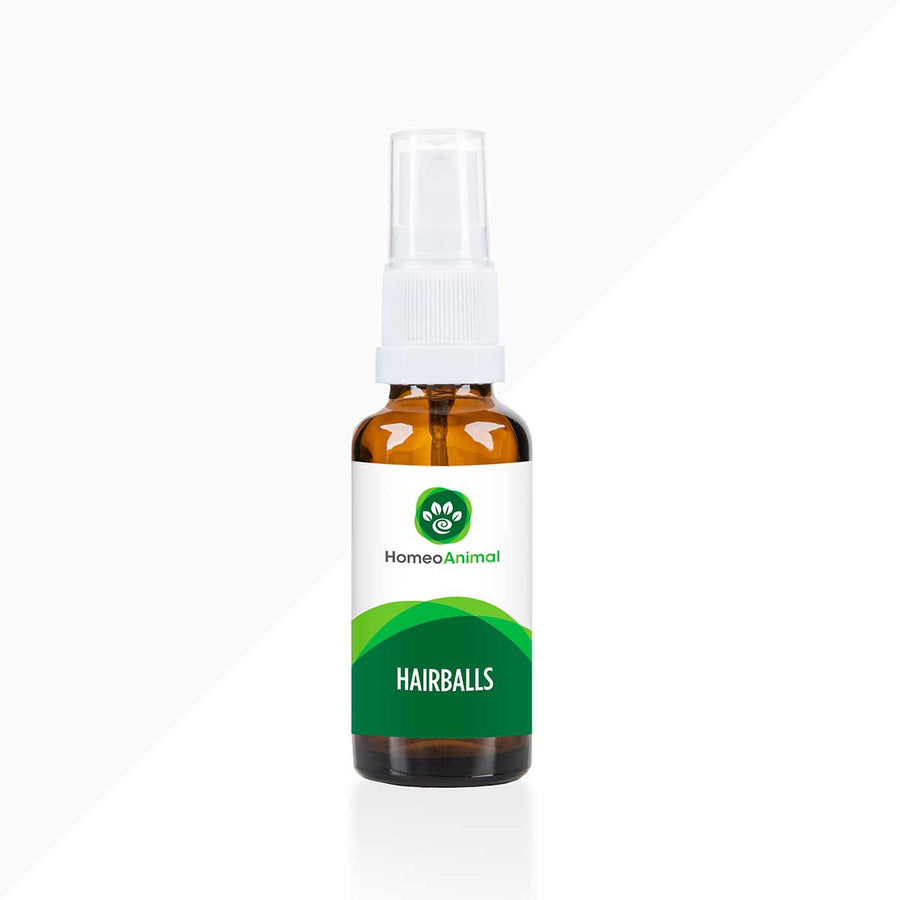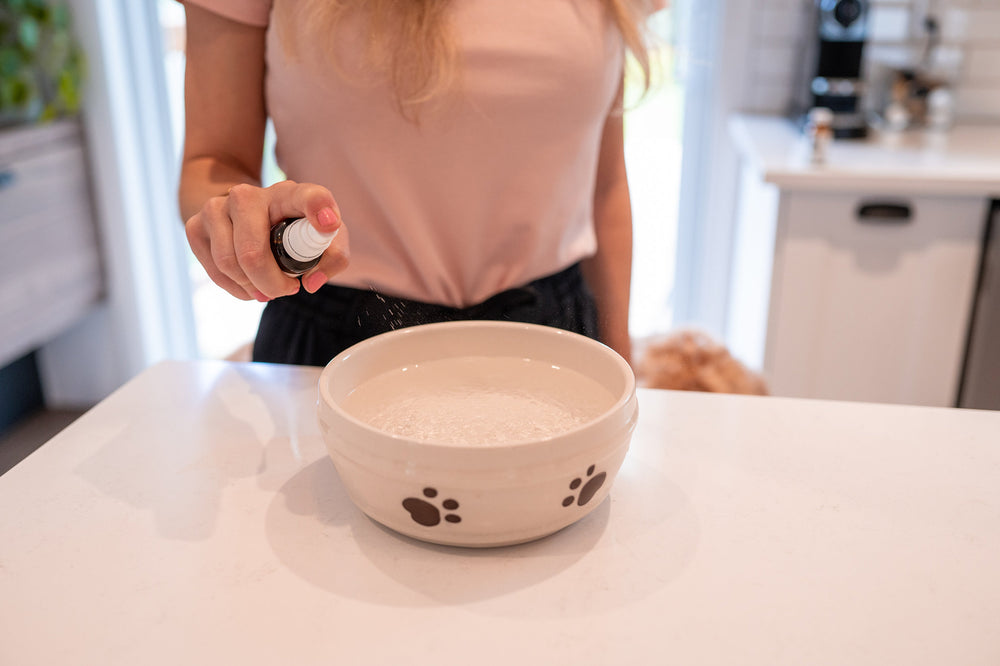Vet Insights: Hairballs in Cats – What’s Normal, What’s Not, and How to Help
List of Contents
- What are Cat Hairballs?
- Why Do Cats Get Hairballs?
- What are the Signs of Hairballs in Cats?
- Are Feline Hairballs Normal?
- Which Cats Produce More Hairballs?
- When Can Cat Hairballs Become Dangerous?
- Vet Diagnosis and Treatment of Cat Hairballs
- How to Help Prevent Hairballs in Cats
- Key Takeaways
- FAQs
Cats are natural self-groomers, but this habit often causes them to swallow loose hair. Over time, that hair can accumulate and form hairballs, a common but sometimes concerning issue for cat owners.
Occasional hairballs are a normal result of grooming, but frequent or severe episodes may signal an underlying health problem. Knowing when to be concerned can help you protect your cat’s well-being.
This guide explains what cat hairballs are, why they form, and the symptoms to watch for. You'll also learn effective prevention tips and when to seek help from a veterinarian or pet homeopathy expert.
What are Cat Hairballs?

A cat hairball (or trichobezoar) is a clump of swallowed fur mixed with digestive fluids that forms in the stomach during grooming. Most hair is passed through the digestive tract, but some accumulates and is eventually coughed up as a hairball.
Hairballs develop as cats groom themselves and swallow loose fur, which their rough, barbed tongues easily catch. While most fur moves through the digestive tract, some accumulates in the stomach and eventually forms a hairball.
Hairballs are typically not round but slender and cylindrical, shaped by the esophagus as they’re expelled. They may be coated in mucus, bile, or food particles, and often take on the color of the cat’s fur, darkened by stomach fluids.
Why Do Cats Get Hairballs?
Many people assume cat hairballs are just a random part of feline life, but they have specific causes. In this section, we’ll explore the key factors that lead to hairball formation and what they mean for your cat’s health:
Natural grooming and indigestible hair
During grooming, cats swallow hair that is made of keratin, a protein their digestive system can’t break down. While most of it passes naturally, some hair can accumulate and form clumps that lead to hairballs.
Increased hair ingestion
Because they ingest more hair when grooming, cats with long fur, such as Persians and Maine Coons, are more prone to develop hairballs. The likelihood of hair buildup in the stomach is increased by the heavy shedding of their thick coats.
Older cats
Older cats tend to groom more efficiently, which can lead to increased hair ingestion. Age-related slowing of the digestive system may also make it harder for them to pass swallowed hair, raising the risk of hairballs.
Seasonal shedding
Hairballs are more common during seasonal shedding periods, such as spring and fall. As cats lose more fur, they naturally ingest more hair while grooming, increasing the likelihood of hairball formation.
Skin issues
Skin conditions in felines can cause excessive shedding or prompt cats to groom more frequently. Both factors increase the amount of hair ingested, raising the risk of hairball formation.
Over-grooming
Cats may over-groom due to stress, anxiety, boredom, pain, or other similar reasons, leading to excessive hair ingestion. This behavior significantly increases the risk of frequent or severe hairballs.
Gastrointestinal (GI) tract issues
Conditions that slow digestion can cause hair to linger in the gastrointestinal tract, increasing the chance of hairball formation. Identifying and addressing underlying GI issues is key to managing chronic hairballs in cats.
Underlying conditions like inflammatory bowel disease (IBD), GI lymphoma, parasites, or pancreatitis can impair digestion and contribute to hairball buildup. A veterinarian should evaluate these issues if hairballs become frequent or severe.
Swallowing foreign objects like fabric or plastic can cause hair to tangle in the digestive tract, increasing the risk of blockages. This can worsen hairball formation and may require prompt veterinary attention.
What are the Signs of Hairballs in Cats?

Retching, gagging, dry heaving, or repeated attempts to vomit are common signs that your cat may be trying to expel a hairball. These symptoms often occur before the hairball is brought up.
Cats often make a distinctive “cough-gag-retch” sound when trying to expel a hairball. This may be preceded by signs of restlessness or vocalizing, such as crying out.
After successfully vomiting a hairball, most cats quickly return to normal behavior. However, if your cat is repeatedly retching without producing a hairball, you may notice wet spots, an important sign to monitor.
Are Feline Hairballs Normal?
Occasional hairballs are normal for most cats and usually aren’t a cause for concern. In healthy cats, the majority of swallowed hair passes safely through the digestive system without issue.
Most healthy cats should only produce a hairball or two occasionally, typically less than once a month, except for Maine Coons and other long-haired breeds that usually expel a hairball once every 2 weeks. More frequent occurrences may signal an underlying issue that needs attention.
Frequent hairballs, such as those occurring every few weeks, lasting over 48 hours, or happening multiple times a year, may indicate an underlying health problem or excessive hair ingestion. In these cases, a veterinary exam or consultation with a pet homeopathy specialist is recommended.
Which Cats Produce More Hairballs?

Because they ingest and lose more hair during grooming, cats with long fur, like Persians and Maine Coons, are more prone to develop hairballs. Due to their slower digestion and increased grooming habits, older cats are also more vulnerable.
Cats that shed heavily or groom compulsively are more likely to develop hairballs. Stress and anxiety can also trigger over-grooming, increasing the amount of hair swallowed and the risk of hairball formation.
When Can Cat Hairballs Become Dangerous?
While most hairballs are harmless, one that grows too large or becomes lodged in the digestive tract can cause dangerous blockages. If this occurs, prompt veterinary attention is crucial to protect your cat’s health.
Urgent hairball symptoms to watch for
- Lethargy or unusual tiredness: A sudden drop in energy may signal discomfort, pain, or an internal obstruction.
- Inability to keep food or water down: Refusing to eat or drink or vomiting frequently may indicate a digestive tract blockage.
- Excessive grass eating: While occasional grass nibbling is normal, doing so excessively may be an attempt to induce vomiting and relieve discomfort.
- Constipation or diarrhea: Disrupted bowel movements can result from a partial blockage or irritation caused by trapped hair.
- Loss of appetite for more than 24–48 hours: A noticeable reduction or complete refusal to eat often signals gastrointestinal distress or discomfort.
- Prolonged gagging, vomiting, or retching without producing a hairball: Persistent unproductive attempts to vomit may suggest a lodged hairball or other obstruction.
- Swollen or tender abdomen: A sore or swollen stomach may be a sign of an internal obstruction or inflammation that needs to be treated right away.
Vet Diagnosis and Treatment of Cat Hairballs
To diagnose a serious hairball-related issue, veterinarians may perform a physical exam along with diagnostic tools like blood work, X-rays, or ultrasound. In severe cases, exploratory surgery may be necessary to locate and remove an obstruction.
For less critical situations, veterinarians may prescribe laxatives or other treatments to help the hairball pass safely.
How to Help Prevent Hairballs in Cats

Contrary to common belief, there are simple and effective ways to reduce or prevent hairballs in cats. In this section, we’ll explore practical prevention strategies and tips to help keep your cat healthy and hairball-free:
Regular grooming
Consistent grooming significantly reduces the risk of hairballs by minimizing the amount of loose hair your cat can ingest. Daily brushing and periodic professional grooming for long-haired breeds can help keep shedding under control.
After brushing, use a damp cloth or pet-safe wipe to remove any remaining loose fur. This extra step helps reduce shedding and further lowers the risk of hairball formation.
Dietary management
Feeding your cat a hairball-control formula can help manage and prevent hairballs. These diets are typically high in fiber, which supports healthy digestion and helps hair pass more easily through the gastrointestinal tract.
Adding small amounts of fiber-rich foods, like pumpkin, carrots, apples, or cat grass, can help move ingested hair through your cat’s system. Always consult your veterinarian or pet nutritionist first, as too much fiber may cause digestive issues.
Boosting your cat’s water intake supports healthy digestion and can help prevent hairballs. Offer fresh water daily, use a pet water fountain, or incorporate more wet food into their diet to keep them well-hydrated.
Some cat owners use vet-approved methods to help lubricate the digestive tract and ease hairball passage, such as a small amount of petroleum jelly on the paw or occasional canned tuna. However, always consult your vet first, and avoid using cooking oils or butter, which can be harmful.
Offering smaller, more frequent meals helps promote healthy digestion and may reduce the buildup of hair in your cat’s stomach. This feeding approach can be an effective part of hairball prevention.
Behavioral and environmental adjustments
Managing over-grooming starts with identifying and reducing sources of stress, boredom, or discomfort in your cat’s environment. Providing regular mental and physical enrichment can help curb excessive grooming and lower the risk of hairballs.
To prevent complications, keep small objects like string, fabric, or plastic out of reach if your cat tends to chew or swallow them. Ingesting foreign items can tangle with hair in the digestive tract, increasing the risk of dangerous hairballs.
Consider using premium natural products
Zumalka’s HAIRBALLS is a premium natural supplement that helps cats gently expel accumulated fur, especially in long-haired breeds. It also helps support respiratory health and promotes clear, comfortable breathing.
Just to emphasize, HAIRBALLS is suitable for all cats, especially long-haired breeds or those that groom frequently and need support clearing their airways. This premium natural product can be safely used with any cat in need of hairball or respiratory support.
Key Takeaways
Occasional hairballs are a normal part of feline life and result from your cat’s natural grooming habits. Understanding the causes, symptoms, and prevention strategies can help you manage them effectively and support your cat’s overall health.
However, frequent hairballs or those accompanied by symptoms like lethargy, appetite loss, or unproductive retching may signal a serious issue. These signs could indicate an intestinal blockage and require prompt veterinary attention.
Regular grooming, a fiber-rich diet, and addressing stress or health concerns can significantly minimize hairballs in cats. These proactive steps support digestive health and contribute to a happier, healthier feline life.
For the best results, always consult your veterinarian or a qualified pet homeopathy expert for guidance tailored to your cat’s individual needs. Professional advice ensures accurate diagnosis and safe, effective treatment options.
FAQs
How do you treat hairballs in cats?
To treat hairballs in cats, use a high-fiber diet, regular grooming, and vet-approved remedies like laxatives. You can also keep a gentle homeopathic remedy on hand, HAIRBALLS, to help support natural elimination and comfort. Consult your veterinarian or a qualified pet homeopath if hairballs become frequent or are accompanied by symptoms like vomiting, lethargy, or appetite loss.
How often should a cat get hairballs?
Most healthy cats should only have a hairball occasionally, typically less than once a month, except long-haired breeds. Frequent hairballs may signal an underlying issue and should be discussed with your veterinarian or pet homeopathy specialist for proper evaluation.
How do you know if your cat has a hairball?
Signs your cat may have a hairball include gagging, retching, or dry heaving, often followed by vomiting a tubular mass. Other symptoms may include appetite loss, lethargy, or prolonged unproductive vomiting.
Does wet cat food cause hairballs?
Wet cat food does not cause hairballs and may help reduce them by supporting hydration and digestion. Hairballs are mainly caused by swallowed fur during grooming, not by the type of food.
Can hairballs be painful for cats?
Yes, hairballs can be uncomfortable or even painful for cats, especially if they cause gagging, retching, or blockages. Persistent symptoms may indicate a serious issue, so veterinary attention is recommended for frequent or severe cases.
Are hairballs stressful for cats?
Hairballs can be stressful for cats, particularly when they cause repeated gagging, vomiting, or discomfort. Ongoing or difficult hairballs may affect your cat’s well-being and could signal an underlying issue that needs veterinary attention.
What happens if a cat can't cough up a hairball?
If a cat can’t cough up a hairball, it may lead to digestive blockages, causing vomiting, loss of appetite, or lethargy. In severe cases, it requires immediate veterinary evaluation and treatment.
What color should a cat's vomit be?
A cat’s vomit can vary in color: yellow (bile), clear (saliva), or brownish (food or hairballs). Consistently red, black, or green vomit may signal a serious issue and requires prompt veterinary care.
What food helps cats with hairballs?
High-fiber hairball control cat food helps move ingested hair through the digestive tract and reduces hairball formation. Wet food also supports hydration and digestion. Always consult your vet or pet nutritionist before changing your cat’s diet.
How often should you brush your cat?
You should brush your cat at least a few times per week, though daily grooming is ideal, especially for long-haired breeds. Regular brushing reduces shedding, prevents mats, and helps minimize hairballs caused by swallowed fur.
Can cats poop hairballs?
Yes, most swallowed hair passes naturally through a cat’s digestive system and is excreted in the stool. However, if too much accumulates, it can form a hairball that must be vomited or may cause a blockage.
Does drinking water help cats with hairballs?
Drinking plenty of water helps cats manage hairballs by promoting smooth digestion and aiding hair passage through the gut. Proper hydration is especially important for cats that eat mostly dry food.
Is wet or dry food better for hairballs?
Wet food is generally better for hairballs because it supports hydration and digestion, helping hair pass through the system more easily. However, high-fiber dry foods formulated for hairball control can also be effective.
What color is parvo vomit?
Parvo vomit in cats or dogs is often yellow or brown and may contain mucus or blood. It’s usually foul-smelling and frequent. Suspected parvo symptoms require immediate veterinary diagnosis and treatment.
What home remedy can I give my cat for vomiting?
For mild vomiting, you can try offering a bland diet such as plain boiled chicken and rice, and ensure your cat stays hydrated. Always consult your veterinarian first to rule out any serious health concerns. Having VOMIPET on hand to use on occasional vomiting occurrences is also beneficial.
How long can a cat go without eating?
A cat should never go more than 24–48 hours without eating, as prolonged fasting can lead to serious health issues like hepatic lipidosis. If your cat refuses food, contact your veterinarian promptly.









Wonderful post! I valued perusing your encounters. Your explanation was clear and direct. Looking forward substance from you!
Fantastic piece! I never realized hairballs could be a particularly normal issue for felines. Your tips on forestalling them are common and simple to follow. Many thanks to you for sharing!
Thanks Teresa, our customer support has sent you an email to help you further !
How I help my cats, specially Simba he have long hair and he soffer with asma. What I can give to him to make him better?
Leave a comment